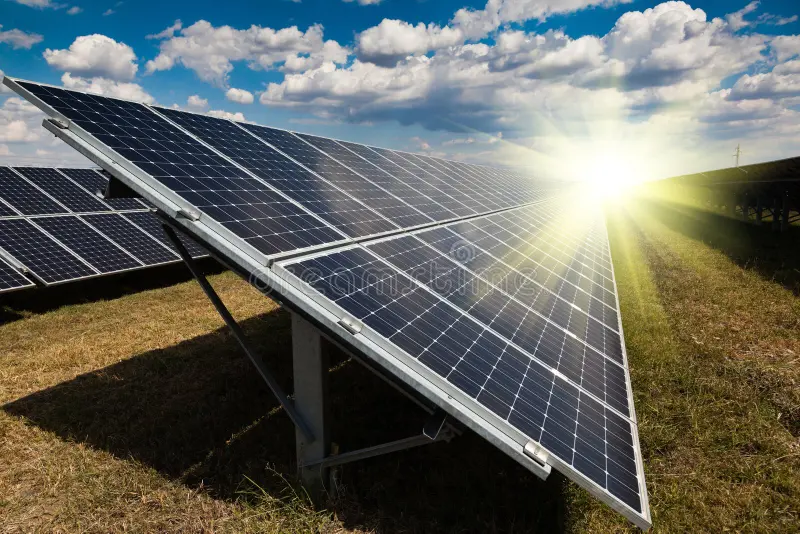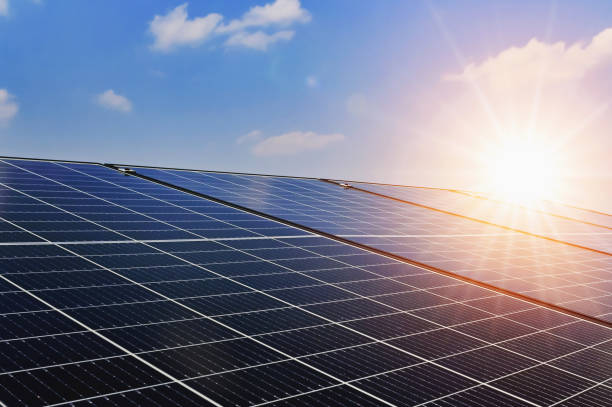Solar
Solar
-
Pre-Installation FAQ
-
Post-Installation FAQ
-
Commercial FAQ
Pre-Installation
The average lifespan of solar panels is around 25 to 30 years. However, many panels can continue to produce electricity at a reduced efficiency beyond that timeframe.
Solar panels generate electricity only when exposed to sunlight. However, energy storage solutions, like batteries, can store excess energy generated during sunny periods for use at night or on cloudy days.
The size of your system depends on your energy needs, budget, and available space. A professional installer can perform a solar assessment to determine the optimal system size.
Solar panels are relatively low-maintenance, but they may require occasional cleaning and inspections. Ask about recommended maintenance practices and costs
Determine if you want to incorporate battery storage to store excess energy for later use or as a backup during power outages.
Get an estimate of the installation timeline, from permitting to the actual installation of solar panels.
Post-Installation
Solar panels capture sunlight and convert it into electricity through a process called photovoltaics (PV). This electricity is then used to power your home or can be stored in batteries for later use.
The energy production of your solar system depends on factors like panel capacity, location, shading, and orientation. Your installer can provide a production estimate.
Solar panels require minimal maintenance. Periodic cleaning to remove dirt and debris is usually sufficient. Check for any shading issues that may arise over time.
Contact your solar installer or a professional to diagnose and resolve any issues. Regular maintenance and cleaning can help prevent performance problems.
Most solar panels come with a 25-year warranty, while inverters typically have warranties ranging from 5 to 25 years. Check the warranty documentation for details.
Most grid-tied solar systems will automatically shut down during a power outage for safety reasons. If you want backup power, consider adding a battery storage system.
Commercial FAQ
Reduced electricity bills.
Lower carbon footprint and environmental impact.
Potential for tax incentives and rebates.
Improved corporate sustainability and reputation.
Hedge against rising energy costs.
Roof Condition: Ensure your roof can support the weight of solar panels and is in good condition.
Sunlight Availability: Assess the amount of sunlight your location receives.
Energy Needs: Determine your energy consumption and whether solar can meet those needs.
Financing Options: Explore financing, leasing, or power purchase agreements (PPAs).
Regulations: Understand local permits, codes, and incentives.
Payback periods can vary but often range from 5 to 10 years. After that, the system generates electricity at minimal ongoing costs, providing significant savings.
Depending on your location and utility, you may be able to sell excess electricity back to the grid through net metering or feed-in tariffs. This can provide additional savings or revenue.
Yes, businesses can integrate battery storage systems with their solar panels. This allows them to store excess energy for use during cloudy days or peak demand periods.
-
Pre-Installation FAQ
-
Post-Installation FAQ
-
Commercial FAQ
Pre-Installation
The average lifespan of solar panels is around 25 to 30 years. However, many panels can continue to produce electricity at a reduced efficiency beyond that timeframe.
Solar panels generate electricity only when exposed to sunlight. However, energy storage solutions, like batteries, can store excess energy generated during sunny periods for use at night or on cloudy days.
The size of your system depends on your energy needs, budget, and available space. A professional installer can perform a solar assessment to determine the optimal system size.
Solar panels are relatively low-maintenance, but they may require occasional cleaning and inspections. Ask about recommended maintenance practices and costs
Determine if you want to incorporate battery storage to store excess energy for later use or as a backup during power outages.
Get an estimate of the installation timeline, from permitting to the actual installation of solar panels.
Post-Installation
Solar panels capture sunlight and convert it into electricity through a process called photovoltaics (PV). This electricity is then used to power your home or can be stored in batteries for later use.
The energy production of your solar system depends on factors like panel capacity, location, shading, and orientation. Your installer can provide a production estimate.
Solar panels require minimal maintenance. Periodic cleaning to remove dirt and debris is usually sufficient. Check for any shading issues that may arise over time.
Contact your solar installer or a professional to diagnose and resolve any issues. Regular maintenance and cleaning can help prevent performance problems.
Most solar panels come with a 25-year warranty, while inverters typically have warranties ranging from 5 to 25 years. Check the warranty documentation for details.
Most grid-tied solar systems will automatically shut down during a power outage for safety reasons. If you want backup power, consider adding a battery storage system.
Commercial FAQ
Reduced electricity bills.
Lower carbon footprint and environmental impact.
Potential for tax incentives and rebates.
Improved corporate sustainability and reputation.
Hedge against rising energy costs.
Roof Condition: Ensure your roof can support the weight of solar panels and is in good condition.
Sunlight Availability: Assess the amount of sunlight your location receives.
Energy Needs: Determine your energy consumption and whether solar can meet those needs.
Financing Options: Explore financing, leasing, or power purchase agreements (PPAs).
Regulations: Understand local permits, codes, and incentives.
Payback periods can vary but often range from 5 to 10 years. After that, the system generates electricity at minimal ongoing costs, providing significant savings.
Depending on your location and utility, you may be able to sell excess electricity back to the grid through net metering or feed-in tariffs. This can provide additional savings or revenue.
Yes, businesses can integrate battery storage systems with their solar panels. This allows them to store excess energy for use during cloudy days or peak demand periods.






